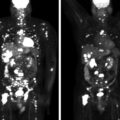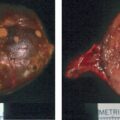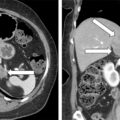Pregnancy is a state of physiologic hypercortisolism. Management of adrenal insufficiency during pregnancy includes adjustment of therapy to physiologic needs and avoidance of adrenal crisis through an in-depth education, availability, and comfort with stress-dose glucocorticoid use. Here we discuss the approach to glucocorticoid and mineralocorticoid therapy before and during pregnancy.
Case Report
The patient was a 36-year-old woman with history of Addison disease and celiac disease. Her medications included hydrocortisone 15 mg on waking, 5 mg in early afternoon and 2.5 mg at 5 pm, and fludrocortisone 0.05 mg every other day. She had an excellent compliance with medical therapy and never experienced an adrenal crisis. The patient had yearly monitoring for autoimmune disorders, including testing for pernicious anemia and thyroid dysfunction. She presented for her yearly evaluation with her endocrinologist 2 months early to discuss management of adrenal insufficiency during pregnancy. On physical examination, her body mass index was 26.1 kg/m 2 , blood pressure 103/75 mmHg, and heart rate 78 beats per minute. She had no hyperpigmentation, no features suggestive of iatrogenic Cushing syndrome, and no lower extremity edema. She was not orthostatic. Pregnancy was confirmed 1 week earlier, at 9 weeks of gestation. She reported a high comfort level with adrenal insufficiency self-management, including the awareness of situations in which she should increase her dosage of hydrocortisone therapy. She never had to self-inject glucocorticoid, but she did receive education on self-injection, and felt comfortable to use it if necessary. She recently refilled her prescription and had three vials of hydrocortisone solution available for use. She had a medical alert bracelet stating “adrenal insufficiency, needs cortisone.” Her partner participated in the education session on adrenal insufficiency.
FOLLOW-UP AND MANAGEMENT
At 19 weeks of gestation, hydrocortisone was increased to 17.5 mg on waking, 5 mg early afternoon, and 2.5 mg at 5 pm . Sick day rules were carefully rereviewed. She was reevaluated again at 28 weeks and 34 weeks of gestation. She had no symptoms, physical examination was not suggestive for under- or overreplacement with glucocorticoid or mineralocorticoid therapy, and her electrolytes were within the normal range. Thus no changes in hydrocortisone and fludrocortisone were made.
Before the planned cesarean section, her medical team followed the plan agreed on between her endocrinologist and obstetrician to inject 100 mg of hydrocortisone solution, followed by 50 mg every 6 hours until able to have oral intake. At that point, she took oral hydrocortisone at slightly increased dose of 20 mg on waking, 10 mg at noon, and 5 mg at 5 pm for 1 week, and then reverted to her prepregnancy regimen.
Discussion
When appropriately managed, women with adrenal insufficiency experience excellent fetal and maternal outcomes. Usually an adjustment in daily hydrocortisone dose is needed in the second or third trimester. The need for adjustment depends on prepregnancy glucocorticoid dose and clinical assessment during pregnancy. Because progesterone has an antimineralocorticoid effect, fludrocortisone therapy may need to be modified during pregnancy. Assessment of mineralocorticoid replacement therapy should rely on the physical examination (blood pressure measurement) and electrolyte assessment. Notably, plasma renin concentrations increase during pregnancy and should not be used in decision making. It is important to provide a detailed education on management during sickness and the importance of prevention of adrenal crisis ( Table 98.1 ). , In addition, the patient’s obstetrical team and the patient should be well aware of the glucocorticoid plans for during labor, delivery, and postpartum period.









